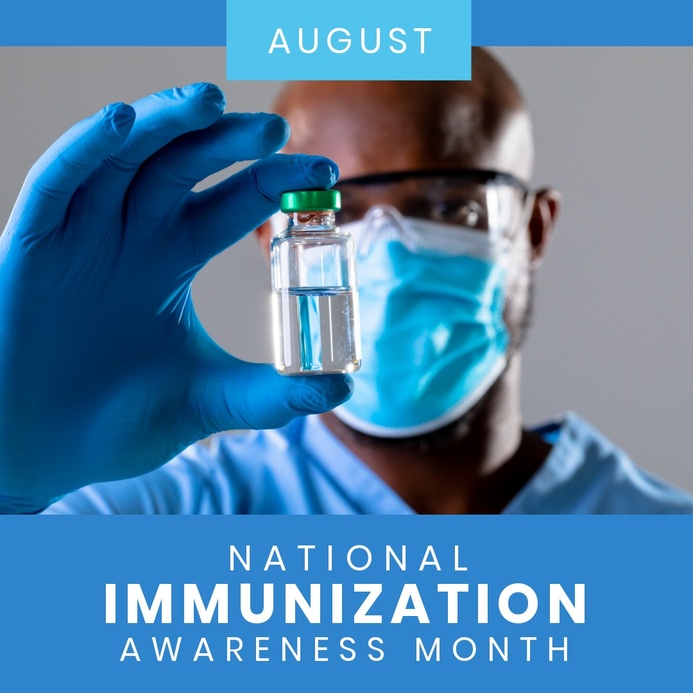
Pumpkin spice season is around the corner, though unfortunately, flu season is by its side. August is an opportune time for healthcare practitioners to have immunization conversations about the flu shot and other vaccinations and benefits that can protect patients against serious illness.
National Immunization Awareness Month is focused on shedding light on the wide range of available vaccines and the impacts of vaccines on patients’ well-being. Dr. Robert M. Califf presented helpful insights and context in his U.S. Food & Drug Administration (FDA) article, sharing that the FDA authorized vaccines based on rigorous evaluation and data analysis to ensure safety and quality.
“They help provide protection from an infectious disease and can lessen the severity of illness,” said Dr. Califf. “If you are immune to a disease, you can be exposed to it without becoming sick. Simply put, because of advances in medical science, vaccines can help protect us against more diseases than ever before.”
Vaccine Types
The U.S. Department of Health & Human Services outlines the types of vaccines available and examples of the diseases they treat:
- Inactivated vaccines: hepatitis A, flu, polio, rabies
- Live-attenuated vaccines: measles, mumps, rubella, rotavirus, smallpox, chickenpox, yellow fever
- Messenger RNA (mRNA) vaccines: COVID-19
- Subunit, recombinant, polysaccharide, and conjugate vaccines: Hib disease, hepatitis B, HPV, whooping cough, pneumococcal disease, meningococcal disease, shingles
- Toxoid vaccines: diphtheria, tetanus
- Viral vector vaccines: COVID-19
Each vaccine was designed to teach immune systems how to combat the germs in different ways based on how immune systems react to specific germs, who needs to be immunized and the best approach to create the vaccine itself. As COVID-19 cases rise and flu season approaches, this month is a key time for vaccine reminders and discussions to be a step ahead of these germs.
Resources for Practitioners
“Trying to filter fact from fiction can be a challenge, but oh so critical when it comes to public health,” said Dr. Califf. Carefully considering the source of vaccine information and speaking with a healthcare professional directly can be helpful if patients have questions about vaccines, so practitioners have the responsibility to be a trustworthy source of information and support.
The Centers for Disease Control and Prevention (CDC) shares, “Healthcare professionals play a key role in educating parents and patients about the importance of vaccination.” To help prepare practitioners to have immunization conversations with their patients, the CDC offers educational resources including the #HowIRecommend video series, CMEs, presentations, immunization schedules and other materials for adult, childhood and adolescent vaccination.
It is also important for practitioners to understand potential barriers or vaccine hesitancy among LGBTQ+ and all minority communities facing disparities. Due to distrust or limited access, for example, some patients are less likely than others to ask about vaccines – or to visit the doctor’s office in the first place.
These resources share research studies and other insights citing unique challenges facing marginalized populations:
- Targeting COVID-19 Vaccine Hesitancy in Minority Populations in the US: Implications for Herd Immunity
- A Hidden Front in Vaccine Hesitancy: The LGBTQ Community
- COVID-19 Vaccine Equity for Ethnic and Racial Minority Groups
Equality Healthcare Consulting Group provides education and training opportunities directly to healthcare providers with a unique, care-centered lens. Well-informed and inclusive practitioners and organizations can translate to better patient outcomes. Providers can lean on our services for culturally competent futures — throughout pumpkin spice season and beyond.
Sources
Califf, Robert M. (2022, August 3). FDA Recognizes National Immunization Awareness Month. Retrieved from https://www.fda.gov/news-events/fda-voices/fda-recognizes-national-immunization-awareness-month
Centers for Disease Control and Prevention. (2022, March 9). COVID-19 Vaccine Equity for Ethnic and Racial Minority Groups. Retrieved from https://www.cdc.gov/coronavirus/2019-ncov/community/health-equity/vaccine-equity.html
Centers for Disease Control and Prevention. (n.d.). Educational Resources and CMEs for Healthcare Professionals. Retrieved from https://www.cdc.gov/vaccines/events/niam/hcp/educational-resources.html
Centers for Disease Control and Prevention. (n.d.). National Immunization Awareness Month. Retrieved from https://www.cdc.gov/vaccines/events/niam/index.html
Cirruzzo, C. (2021, February 25). A Hidden Front in Vaccine Hesitancy: The LGBTQ Community. Retrieved from https://www.usnews.com/news/health-news/articles/2021-02-25/vaccine-hesitancy-in-the-lgbtq-community-poses-potential-challenge
Hildreth, J., & Alcendor, D. J. (2021). Targeting COVID-19 Vaccine Hesitancy in Minority Populations in the US: Implications for Herd Immunity. Retrieved from https://www.ncbi.nlm.nih.gov/pmc/articles/PMC8151325/
U.S. Department of Health & Human Services. (n.d.). Vaccine Types. Retrieved from https://www.hhs.gov/immunization/basics/types/index.html



